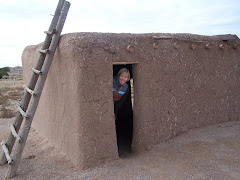Bigenho, Chris (2009/March, April). Mining for gold. Learning & Leading with Technology, 36, Retrieved 3/18/2009, from http://www.learningandleading-digital.com/learning_leading/200904/?pg=20&pm=2&u1=friend
In this week's journal article, Chris Bigenho explores RSS technology, and its many uses in education. Bigenho suggests several uses for RSS technology including bookmarking articles for students, and gathering current information for teaching purposes. The author defines RSS, explaining explaining the concept of RSS, and then the two types of aggregators: internet hosted and client side. Internet hosted aggregators allow a user to access their information from any computer, while client side aggregators are integrated into operating systems, and limit a user to their personal computer, when accessing their RSS information.
Bigenho then suggests ways that teachers can incorporate RSS into their classrooms, such as subscribing to blogs, subscribing to social bookmarks, and feeding content to html pages. Using RSS to monitor student's blogs enables teachers to easily stay up-to-date on student posts, without having to check individual student blogs each day. Social bookmarking is a great way for teachers and students to organize and share information, and is an makes resources easily available to students. Feeding content to html pages enables teachers to make a variety of media resources available to students by allowing the teacher to build in a feed to a web page or site without worrying about html code--the feed takes care of that for the teacher. Again, this makes information more easily accessible to students, because a teacher can post it all on one site, and not spend much time updating it. The author even gives instructions in his article for "Creating a Custom Feed," walking the user through the process, step-by-step.
RSS ensures that all new information will be displayed on the site, and updated as it changes, so time is not wasted looking for updated information--the new information comes to the user. This means that teachers can incorporate dynamic content in their lesson plans, without a great amount of extra time and energy spent looking for information and media. Students benefit from RSS because it makes information easier for them to access, and enriches their classroom experience by giving them a greater pool of information to draw from, and ensuring that this information is current and relevant to students.
Questions:
1. How might I use RSS as a K through 5 teacher?
As an elementary school teacher, I would be able to use RSS to subscribe to blogs and sites that are relevant to information my class would cover over the course of a year, and also to keep up-to date on professional online sites and journals, such as itse and classroom 2.0.
2. How might I use RSS as a 6 through 12th grade teacher?
As a middle or high school teacher, I could use RSS to in conjunction with social bookmarking, so that my students could have current articles throughout the year, and from year to year. I could use RSS to keep the curriculum "fresh," following sites and/or blogs that relate to classroom topics. By createing y own classroom blog that utilizes RSS, I could keep students, parents and the community informed about classroom events.




